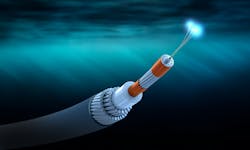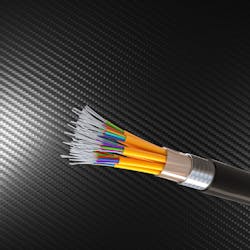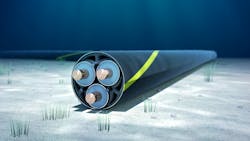Seeing Under the Sea in 2023
Improved Technologies to Protect Subsea Cable for the Long-Term
In the United States alone, an underground cable strike incident occurs every 1-2 minutes. Think about that for a second. That equates to 400,000 to 800,000 incidents in that country every single year just for terrestrial cable strikes. Subsea cables, which have been dubbed the “world’s information superhighways,” due to their duty of carrying more than 99% of Internet traffic, have their own set of annual problems. More than 100 breaks of submarine cables occur every single year.
With approximately 800,000 miles of cable underneath the water, connecting us from continent to continent through more than 500 active submarine cables, protection of these critical assets—as well as terrestrial fiber cables—is crucial.
“…even after a 100+ years of technological advancement, the process to repair subsea cables remains difficult. Typically, repairs are made by ships that pull the cut ends of the fiber to the surface for splicing. The ends are then rejoined before the restored fiber lines are returned back to the seabed. These are costly repairs for companies that have a direct impact on communication between continents.”
Altogether, there are more than 3 billion miles of optical fiber installed around the Earth, which includes submarine, aerial, and underground cables enabling critical traffic we rely on every day to stay connected.
We’ve reached a point as a society where consumers today can't live without Internet-fueling fiber for a day, and companies stand to lose the most financially and reputationally from such outages. Approximately 5.07 billion people around the world use the Internet today, which equates to 63.6% of the world’s total population. This is why it is imperative we protect these important fiber resources and avoid the billions of dollars of repairs for the world's ICT operators.
Cable Strikes Prove Costly
With billions of miles of cable infrastructure and no single governing body for the utility industry, putting a concrete number on the average cost of a utility strike worldwide proves difficult.
However, around the globe, utility strikes regularly cost cities, counties and private organizations seven-figure amounts to get critical services back online. In New Zealand, for example, the total cost of utility strike reports for 2020 alone was approximately $89.6 million NZD per year. In general, the total economic cost of a strike can be 29 times as high as the direct cost according to research by Dr. Lewis Makana examining the real cost of utility strikes. That means if direct damage from a utility strike costs $1M, true overall costs can shoot as high as $29M.
Let’s zero in on how this affects the telecom industry specifically. Telecom infrastructure ranks in the top five most struck assets around the world in most countries. A 2020 Utility Strike Damages Report, that summarizes the findings of 2,070 utility strikes across the U.K., reveals a significant spike in telecom strikes in that country, surpassing terrestrial strikes on natural gas, water and electricity.
In the case of subsea cables, these valuable assets regularly come under threat from anchor threats and bottom trawling, while also being targeted deliberately as a tried-and-true proven practice of war and espionage. Interestingly, the first cable cut attack can be traced back to 1898 during the Spanish-American War, and even after a 100+ years of technological advancement, the process to repair subsea cables remains difficult. Typically, repairs are made by ships that pull the cut ends of the fiber to the surface for splicing. The ends are then rejoined before the restored fiber lines are returned back to the seabed. These are costly repairs for companies that have a direct impact on communication between continents.
The true test for todays’ ICT operators is how to best locate accidental and intentional breaks and fix these issues quickly and cost effectively.
How to Protect These Assets
When cables are first installed underground, they’re not completely devoid of protection. Underground cables are generally encased in grounded and air-insulated sheath enclosures that keep them from being interrupted by growing vegetation and wildlife. It’s also important for underground cables to have protection from water, corrosion, and too much underground mechanical stress. But even with some protection in place, unexpected strikes have always posed a risk, and how operators respond by monitoring and protecting their assets is continually evolving.
Much like the evolution of subsea cables themselves, distributed fiber sensing (DFS), and specifically vibration detection and ranging (VID+R), technologies have seen rapid growth and are reaching an inflection point in adoption moving forward on these assets.
One new technology that can help is a passive sensor system delivered over optical fiber cable infrastructure called Vibration Detection and Ranging (VID+R®️). This platform sits at the intersection of optical fiber sensing, machine learning, integrated photonics and optical fiber telecoms network. This technology is pulled together into a digital platform that triggers an alarm when the ground is disturbed around live cables, providing an early warning.
“With billions of miles of cable infrastructure and no single governing body for the utility industry, putting a concrete number on the average cost of a utility strike worldwide proves difficult."
The platform helps pinpoint the activity, alerting those in the field of a potential strike and providing an accurate location. This “as a service” model provides customizable dashboards for customers and works to minimize digging accidents and impact from disasters such as earthquakes underground and below seabeds. There is a submarine cable focused solution as well.
The only way we can protect our greatest utility assets on land and sea for the future is to create revolutionizing technologies that transform the ways we perceive and respond to world events around the globe. It’s time to leverage fiber sensing, ML, integrated photonics and fiber to protect the assets we’ve invested in so heavily.
About the Author

Raj Jayawardena
EVP of Business Development & Transformation, FiberSense
Raj Jayawardena brings over 20 years of leadership in the telecommunications industry to his role as EVP of Business Development & Transformation at FiberSense. With more than a decade of experience in the submarine cable industry, Raj’s previous positions include senior roles within Australian carriers and management positions at Vocus Communications, Nextgen Networks and PowerTel. Raj is an electrical engineer with a passion for creating commercial outcomes for new technology. For more information, visit https://fibersense.com/. Follow Raj on LinkedIn: https://www.linkedin.com/in/rajiv-jayawardena-6726814/ and FiberSense on LinkedIn: https://www.linkedin.com/company/fiber-sense-pty-ltd/.


